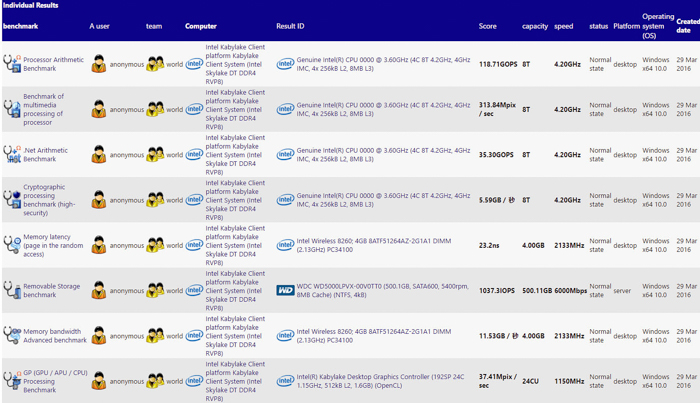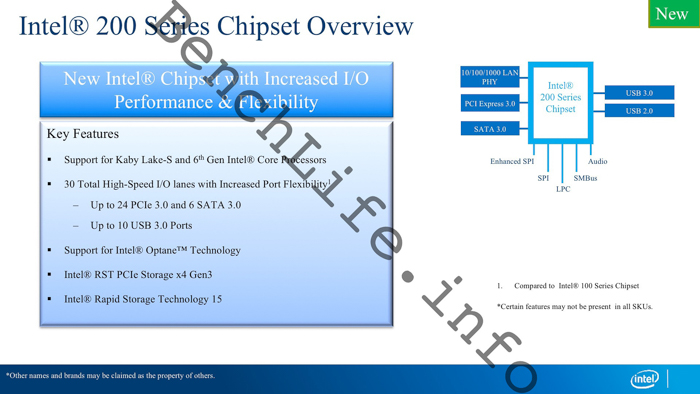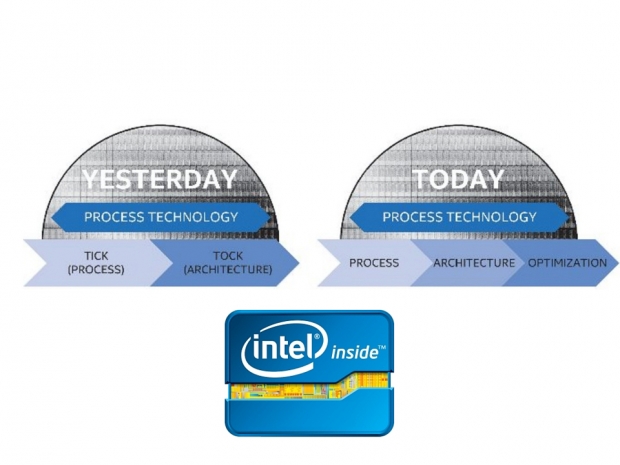
Intel Core i7 7700K benchmark using SiSoft Sandra Bechmark (March 29, 2016) (Larger image here)
According to the results, the Core i7 7700K is a quad-core chip running at 3.60GHz (up to 4.2GHz Turbo) and features eight threads, 8MB of L3 cache, and includes integrated graphics with 24 execution units and the same 1,150MHz clockspeed as the Core i7 6700K (Intel HD Graphics 530, GT2, 24 units).
Running at the 4.20GHz Turbo clock frequency in Windows 10 x64 (and perhaps using an engineering sample), the benchmarks show 118.71 GOPS (giga-operations per second) across eight threads, 313.84 megapixels per-second in the multimedia test, 35.30 GOPS in the Microsoft .NET arithmetic benchmark, 5.59GB/s cryptographic performance, 23.2 nanoseconds DDR4 latency, and 37.41 megapixels per-second GPU performance.
This particular chip is the successor to Intel’s Skylake-based Core i7 6700K, the company’s top quad-core option for Socket LGA 1151, which launched in Q3 2015 at a 4.0GHz base frequency (4.2GHz Turbo), eight threads, 8MB L3 cache and a 91W TDP at $349 MSRP.
Intel’s Core i7 7700K is likely to become the company’s new LGA 1151 unlocked flagship between now and Q3 of next year when it unveils its 10-nanometer Cannonlake lineup (see: Intel’s updated Moore’s Law development model). Meanwhile, most brand vendors will likely start shipping Kaby Lake CPUs between July and October 2016.
Kaby Lake desktop CPUs like the Core i7 7700K will retain full compatibility with existing Intel Z170 motherboards, but the company will also offer a newer 200-series chipset built on LGA 1151 with a few more I/O-side improvements. The chipset is said to include up to 24 PCI-Express 3.0 lanes (up from 20), six native SATA III 6Gbps ports and ten USB 3.0 ports.
Intel’s 200-series chipset overview, published November 2015 (via Benchlife.info)




